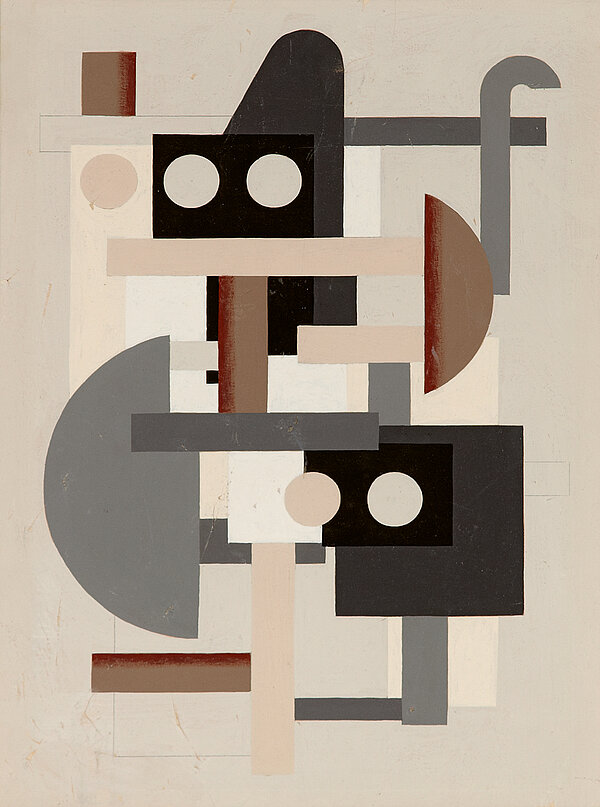Willi Baumeister
Abstraktion auf Hellgrau, 1927
[Abstraction on Pale Grey]
Mixed media on card
32,5 x 23,3 cm
© VG Bild-Kunst, Bonn 2022
Photo: Gerhard Sauer
The painter, graphic artist and stage designer Willi Baumeister was one of the most prominent members of the German avant-garde. After completing his apprenticeship as a scenic artist, he commenced his artistic career at the Stuttgart Kunstakademie, where together with Oskar Schlemmer and the Swiss artist Otto Meyer-Amden he was a pupil of Adolf Hölzel. His student years were marked by the search for the right kind of post-Impressionist influences and a deep appraisal of the work of Paul Cézanne. After the First World War, Baumeister encountered the international currents of constructivism and from 1919 onward developed a stringent vocabulary of forms based on elementary geometrical shapes. His work developed in the 1920s between the cross-currents of abstraction and figuration. Through his deep interest in the human body, the surface became of central importance to him and the basis for all of his painting. Apart from the “wall paintings”, which marked the first pinnacle in Baumeister’s oeuvre, between 1920 and 1929 Baumeister created among other groups of interrelated works his “Flächenkräfte” and “Maschinenbilder” (Area Forces, and Machine Pictures) as well as a number of graphics in which he explored the fundamental laws of art and strived to achieve a compelling balance between the constructive means he employed that was far removed from representationalism.
It was in this vain that he painted his "Abstraktion auf Hellgrau" [Abstraction on Pale Grey] in 1927. This composition – done in pencil, opaque white and body colours in various shades of grey, pink and brown on a grey background – is dominated by geometrical shapes that are reminiscent of machine parts. These elements, which extend over the entire of the vertical format painting – squares, rectangles, bars, round and semicircular shapes – appear to be floating in an imaginary space. They seem to be nested inside one another, pieced together and intersecting or overlapping so as to generate a spatial dimension without actually pin-pointing the spatial relationships. The arrangement of the elements is exactly balanced. In a perfect dialectic, Baumeister has created a tension between horizontals and verticals, black and white, squares and circles – so that each element finds it counterweight on the picture surface in both form and colour. With the exception that is of the diagonal formed by the left margin of the grey cone-like shape on the upper edge, which has no corresponding element. This shape marks the central axis and the apex of the composition and forms a kind of climax within the carefully balanced visual architecture. (Camilla Bonath-Völkel)
Willi Baumeister
1889 born in Stuttgart
1955 died in Stuttgart


